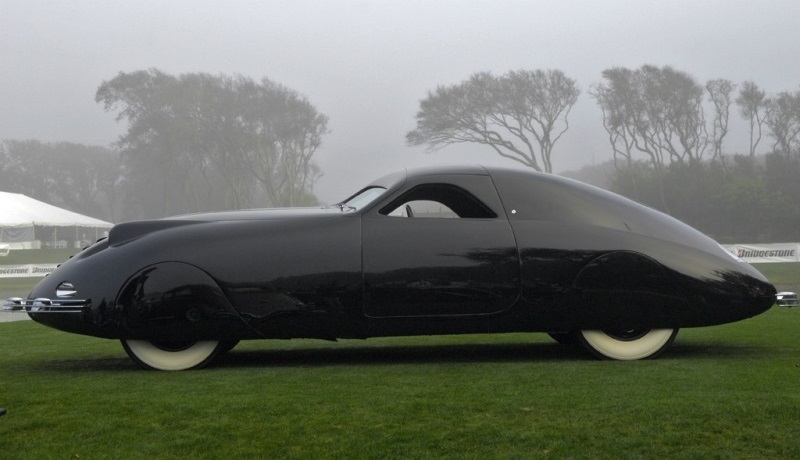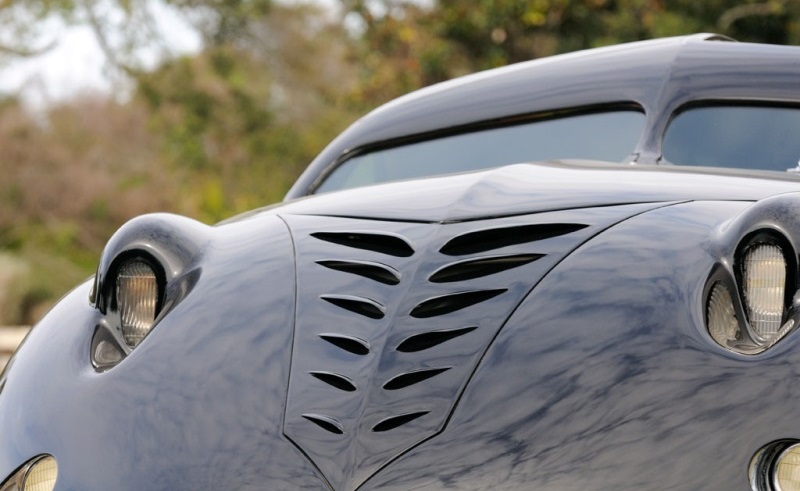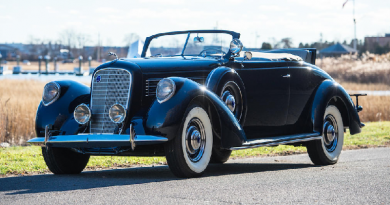1938 Phantom Corsair
The Phantom Corsair is a prototype automobile built in 1938. It is a six-passenger 2-door sedan that was designed by Rust Heinz of the H. J. Heinz family and Maurice Schwartz of the Bohman & Schwartz coachbuilding company in Pasadena, California. Although sometimes dismissed as a failure because it never entered production, the Corsair is regarded as ahead of its time because of its futuristic features, and styling cues such as faired-in fenders and a low profile.

The chassis was from a Cord 810 and large enough to seat six individuals. To propel this rather large vehicle, a Lycoming V8 engine was fitted that displaced 289 cubic-inches and provided 190 horsepower allowing the Phantom to reach 115 miles per hour. Drum brakes on all four corners were necessary to slow the vehicle and keep it in the drivers control.

Inside, the Phantom Corsair offered room for six people, four upfront and two in the rear. The dashboard had an unusual array of aeronautical instrumentation and a switch panel mounted on the roof. Other unique features included push-button automatic doors, ‘thermostatic’ temperature control, green-tinted safety glass, hydraulic bumpers, and a thick layer of cork/rubber insulation for the cockpit.

Although sometimes dismissed as a failure because it never entered production, the Corsair is regarded as ahead of its time because of its futuristic features, and styling cues such as faired-in fenders and a low profile.

The low-slung, coupe look the 1938 Phantom Corsair sports was, at the time, a popular idea for sports cars and is today one of the most-loved retro looks a car can achieve. Despite its looks, though, aerodynamics on the Phantom Corsair are only marginal by today’s standards, though they were cutting-edge in 1938. The shape is actually counter-productive for airflow, allowing a lot of lift underneath the car due to the body’s “clamshell” shape (a problem common to vehicles of this shape, such as the early Volkswagen Beetle).




